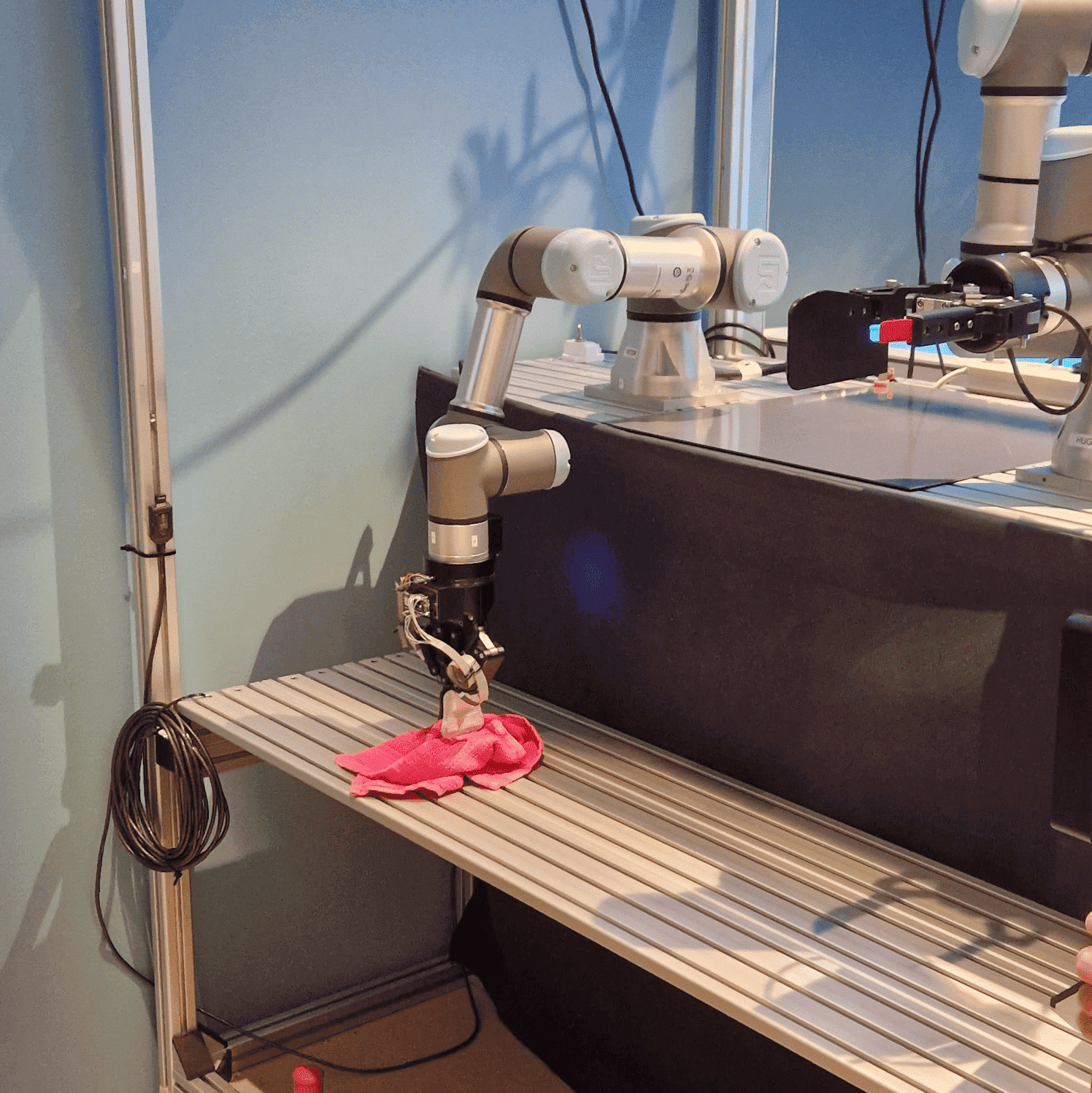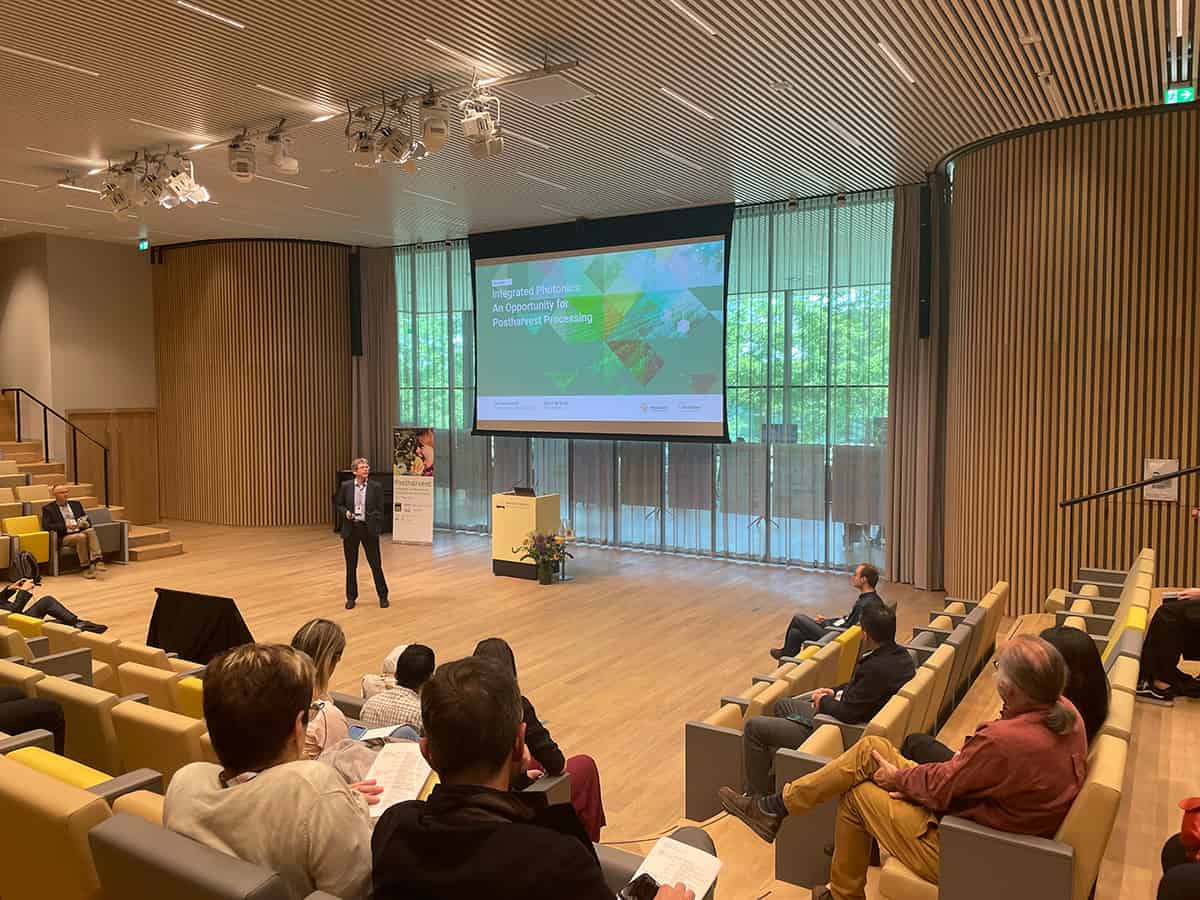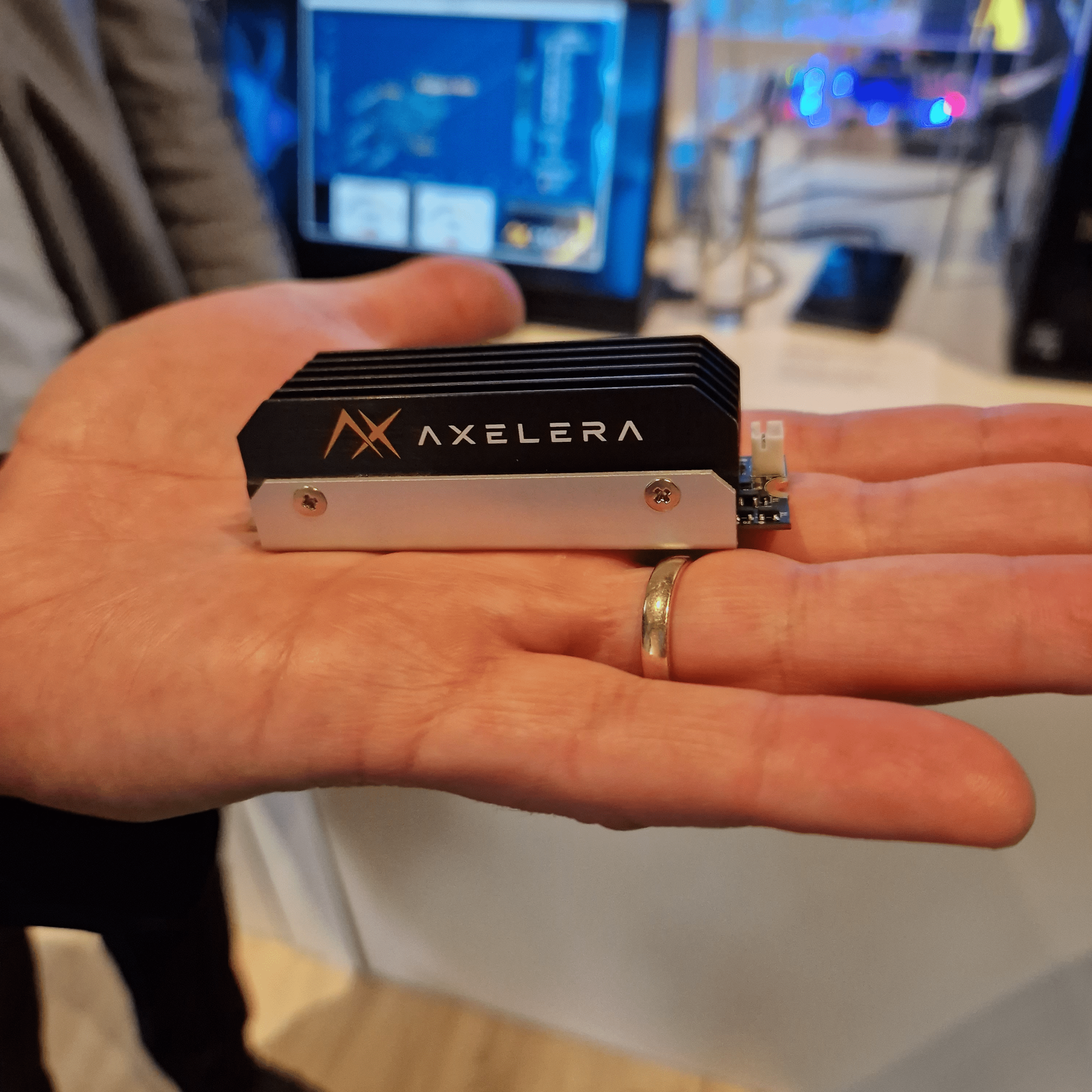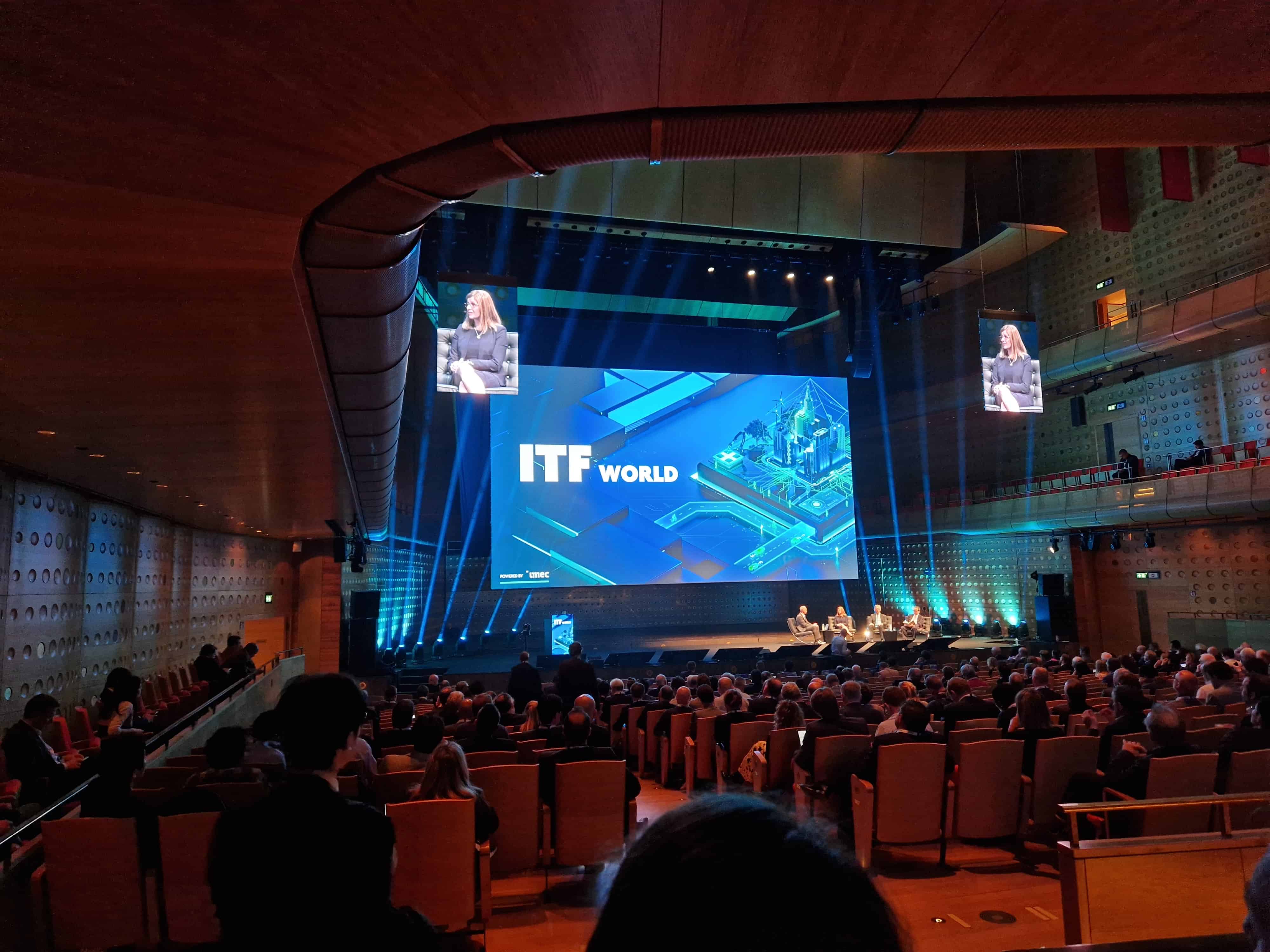
In addition to a packed schedule of panels and keynotes, the ITF World – imec Technology Forum – was also a chance to visit and see tens of demonstrations of the technologies developed within imec. Digital orchards, edge AI chips, and a digital twin of the human body were all on display during the institute’s deep tech and semiconductors event.
The ITF World is the main imec’s summit, organized yearly to showcase technologies and host talks, which this year took place in Antwerp, Belgium. imec is the leading Belgian research and development institute, headquartered in Leuven, Belgium, but with branches in the Netherlands, Asia, and the United States. Especially focused on research on semiconductor technology, the institute has different areas of expertise, from health, connectivity, and artificial intelligence technologies. Here are seven – plus one – of the demos that intrigued us the most.
A cobot folding cloths
A robotic arm is busy folding a cloth in one of the booths. It observes the item, identifies its shapes, and then folds it. This process is one of the most challenging for a robot to complete, and objects like cloths can give robots a hard time to be detected. Whereas manufacturing robots operate in predictable settings, collaborative robots have to interact more with humans. Therefore, having them equipped with greater manipulating capabilities eases the integration process. The University of Ghent’s, Belgium, IDLab researchers who developed this technology see their first application in labs for moving glassware.

A digital twin of your body
Digital twins of factories are helpful for companies to simulate and experiment with new things without the need for physically installing a new device. What if we could have a digital twin of our own body? A project part of the OnePlanet research center did so. Complemented by devices such as sensing ingestible pills, the system detects and analyzes health data to improve optimal diet intervention. Furthermore, analyzing gut health provides insights into one individual’s risk of developing lifestyle diseases such as diabetes, burnout, or cardiovascular pathologies. This digital twin puts the gut-brain axis in the spotlight, as mental well-being strictly relates to the food we eat.
Digital orchard
Processes like pruning and fruit picking are some of the most labor-intensive in managing an orchard. In another project within the OnePlanet research center, scientists created a 3D replica of an orchard, using sensing technologies to create a digital twin of the plantation. The software is now targeting pruning – selectively removing parts of a plant – and identifying what branches to cut and which not to. For now, the software is designed to train workers to become expert pruners — without the risk of compromising harvest – but it will eventually be integrated into robots for taking over these tasks. Furthermore, the system allows for broader monitoring of plants.

Peripheral nerve stimulation
Peripheral nerve stimulation (PNS) is a new treatment option for chronic pain and epilepsy. This technique alters the electrical activity of neural fibers by sending electric signals, relieving the patient from pain. An imec research group at Eindhoven’s Holst Center is working on better PNS implant technology to design devices that improve both comfort and efficiency of these implants. The researchers are partnering up with the American Flstein Institute for Medical Research to improve the selectivity of these devices, which could replace, or complement, the use of common pills to tackle nerve-related diseases.
Axelera AI’s chip
Axelera AI’s edge AI chips were also on showcase at IITF World. The company designed the most powerful chip for edge AI – where computation happens inside the device and not in the cloud as systems like Bard or Chat GPT do. Their Metis platform allows computer vision applications to be more powerful and accessible. The company recently raised $50 million in its Series A round to support its global expansion and mass-produce its first-generation AI platform.

Photovoltaic on everything
Transitioning to greener energy sources requires broader photovoltaic (PV) technology adoption. For this same reason, a cohort of imec researchers is studying new solutions to integrate solar modules into buildings and vehicles. In one of the demo floor booths, they presented their PV panels for cars and buildings, striving for lightweight solutions that can accommodate energy production and design.
Road users detection
To have reliable autonomous vehicles, early detection of users is fundamental. A group of imec researchers at the University of Ghent showcased a sensor fusion technology system to spot moving targets with lower latency. This also allows for identifying a pedestrian, or an animal, in difficult situations. In a video, they showed the detection of a pedestrian that crosses the street at the very last second, hidden by a line of parked cars. This solution compares image pairs from distinct time instances, spotting their differences and then recognizing the presence of a pedestrian.

Wireless communication for Industry 4.0
Most of the devices we use daily work wirelessly. Either via Bluetooth or Wi-fi connections, there is no need for cumbersome cables. A research group within imec is allowing wireless communication between machines and robotic arms throughout the same production line. The system guarantees stability by avoiding interferences in runtime. During the event, a robotic arm connected to the system used the venue’s busy public network to showcase its solution, proving to work efficiently even with hundreds of devices connected.







